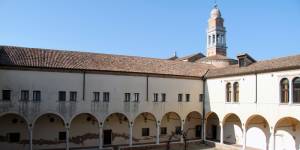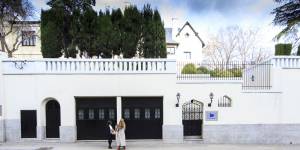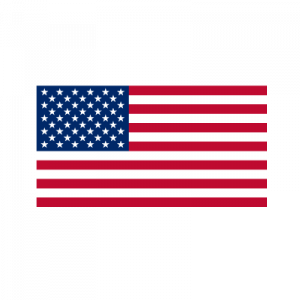Adam lived with his wife Beatrice and their two children in an old country cottage. In one corner of the large garden stood a vigorously-growing rhododendron bush. One day in the spring of 2006 Adam pruned the bush, leaving the leaves and stems in an old bucket where they were soon covered by rainwater. A few days later, Adams son David filled his water pistol from the bucket and sprayed his sister who was hiding in one of the apple trees in the garden. The water from the pistol went all over the tree as well as the little girl, who in her excitement fell out of the tree.
When Adam came to harvest the fruit in the autumn of 2006, he noticed that the apples from the tree had very few insect pests. Remembering the incident with the water pistol, he wondered whether the rhododendron bush had special properties and began to carry out experiments. Over the next few months he tried various ways of mixing the leaves of the bush with water, testing the resultant liquid on the fruit trees in his garden. He also consulted his friend Charlie, a keen amateur botanist, who advised Adam that the bush was a very rare variety, rhododendron matey, whose natural habitat is the Himalayas. A few specimens were brought back to England in the 1920s, where horticulturalists at Kew Gardens observed that the plants appeared to be toxic to certain species of small birds.
Adams next door neighbour, Diana, is a keen organic gardener and very inquisitive. On several occasions she overheard Adam and Beatrice discussing Adams experiments and peeped through the fence to try to see what Adam was doing. In the spring of 2007, she took cuttings from branches of the rhododendron bush growing through gaps in the fence between her property and Adams. She divided the cuttings into two batches. Diana mashed up the leaves from one batch in white spirit to make a paste which she then painted on to the fruit trees in her garden. Having found that this reduced the number of insect pests, in 2008 she started using the paste on trees in an orchard which she ran as a commercial venture. She has continued to use the paste to treat the trees in her orchard ever since and supplies fruit from the orchard to a number of supermarkets in the United Kingdom.
Diana used the other batch of cuttings to propagate plants which she later passed on to her brother, Edward. Edward is the research director of GreenFinger Industries plc (GFI), a company specialising in the manufacture of organic pesticides. After Edward and the rest of the companys research team conducted a lengthy programme of experiments on the plants supplied by Diana, GFI launched InsectDeath in February 2011. InsectDeath is obtained from grinding the leaves from rhododendron matey in water and then freeze-drying the solution to make a powder. This powder can either be applied directly to fruit trees with a brush or can be mixed with water to make a spray. The instructions on the container state that the product should be applied no more than twice to each tree. Insect Death is sold commercially at a number of leading garden centres.
Adam meanwhile applied for a patent on 1 October 2007. The patent application was published on 1 April 2009 and was granted on 1 April 2012. The principal claims read as follows:
Claim 1: a composition for the prevention of insect pests in fruit trees, which consists of the chopped leaves of rhododendron matey soaked in water for 24 hours, the resultant aqueous solution being strained and applied to fruit trees by means of spraying.
Claim 2: a method of preventing insect pests in fruit trees, in which the trees are sprayed with the composition of Claim 1 on four occasions at weekly intervals in early spring.
Adam has just learned of the activities of Diana, Edward and GFI. Advise him of his chances of success in bringing a patent infringement action against them.
CAN ANY ONE HELP IN SOLVING MY IPR QUESTION ?
Posted Jul 29, 2012 15:11
Adam lived with his wife Beatrice and their two children in an old country cottage. In one corner of the large garden stood a vigorously-growing rhododendron bush. One day in the spring of 2006 Adam pruned the bush, leaving the leaves and stems in an old bucket where they were soon covered by rainwater. A few days later, Adams son David filled his water pistol from the bucket and sprayed his sister who was hiding in one of the apple trees in the garden. The water from the pistol went all over the tree as well as the little girl, who in her excitement fell out of the tree.
When Adam came to harvest the fruit in the autumn of 2006, he noticed that the apples from the tree had very few insect pests. Remembering the incident with the water pistol, he wondered whether the rhododendron bush had special properties and began to carry out experiments. Over the next few months he tried various ways of mixing the leaves of the bush with water, testing the resultant liquid on the fruit trees in his garden. He also consulted his friend Charlie, a keen amateur botanist, who advised Adam that the bush was a very rare variety, rhododendron matey, whose natural habitat is the Himalayas. A few specimens were brought back to England in the 1920s, where horticulturalists at Kew Gardens observed that the plants appeared to be toxic to certain species of small birds.
Adams next door neighbour, Diana, is a keen organic gardener and very inquisitive. On several occasions she overheard Adam and Beatrice discussing Adams experiments and peeped through the fence to try to see what Adam was doing. In the spring of 2007, she took cuttings from branches of the rhododendron bush growing through gaps in the fence between her property and Adams. She divided the cuttings into two batches. Diana mashed up the leaves from one batch in white spirit to make a paste which she then painted on to the fruit trees in her garden. Having found that this reduced the number of insect pests, in 2008 she started using the paste on trees in an orchard which she ran as a commercial venture. She has continued to use the paste to treat the trees in her orchard ever since and supplies fruit from the orchard to a number of supermarkets in the United Kingdom.
Diana used the other batch of cuttings to propagate plants which she later passed on to her brother, Edward. Edward is the research director of GreenFinger Industries plc (GFI), a company specialising in the manufacture of organic pesticides. After Edward and the rest of the companys research team conducted a lengthy programme of experiments on the plants supplied by Diana, GFI launched InsectDeath in February 2011. InsectDeath is obtained from grinding the leaves from rhododendron matey in water and then freeze-drying the solution to make a powder. This powder can either be applied directly to fruit trees with a brush or can be mixed with water to make a spray. The instructions on the container state that the product should be applied no more than twice to each tree. Insect Death is sold commercially at a number of leading garden centres.
Adam meanwhile applied for a patent on 1 October 2007. The patent application was published on 1 April 2009 and was granted on 1 April 2012. The principal claims read as follows:
Claim 1: a composition for the prevention of insect pests in fruit trees, which consists of the chopped leaves of rhododendron matey soaked in water for 24 hours, the resultant aqueous solution being strained and applied to fruit trees by means of spraying.
Claim 2: a method of preventing insect pests in fruit trees, in which the trees are sprayed with the composition of Claim 1 on four occasions at weekly intervals in early spring.
Adam has just learned of the activities of Diana, Edward and GFI. Advise him of his chances of success in bringing a patent infringement action against them.
When Adam came to harvest the fruit in the autumn of 2006, he noticed that the apples from the tree had very few insect pests. Remembering the incident with the water pistol, he wondered whether the rhododendron bush had special properties and began to carry out experiments. Over the next few months he tried various ways of mixing the leaves of the bush with water, testing the resultant liquid on the fruit trees in his garden. He also consulted his friend Charlie, a keen amateur botanist, who advised Adam that the bush was a very rare variety, rhododendron matey, whose natural habitat is the Himalayas. A few specimens were brought back to England in the 1920s, where horticulturalists at Kew Gardens observed that the plants appeared to be toxic to certain species of small birds.
Adams next door neighbour, Diana, is a keen organic gardener and very inquisitive. On several occasions she overheard Adam and Beatrice discussing Adams experiments and peeped through the fence to try to see what Adam was doing. In the spring of 2007, she took cuttings from branches of the rhododendron bush growing through gaps in the fence between her property and Adams. She divided the cuttings into two batches. Diana mashed up the leaves from one batch in white spirit to make a paste which she then painted on to the fruit trees in her garden. Having found that this reduced the number of insect pests, in 2008 she started using the paste on trees in an orchard which she ran as a commercial venture. She has continued to use the paste to treat the trees in her orchard ever since and supplies fruit from the orchard to a number of supermarkets in the United Kingdom.
Diana used the other batch of cuttings to propagate plants which she later passed on to her brother, Edward. Edward is the research director of GreenFinger Industries plc (GFI), a company specialising in the manufacture of organic pesticides. After Edward and the rest of the companys research team conducted a lengthy programme of experiments on the plants supplied by Diana, GFI launched InsectDeath in February 2011. InsectDeath is obtained from grinding the leaves from rhododendron matey in water and then freeze-drying the solution to make a powder. This powder can either be applied directly to fruit trees with a brush or can be mixed with water to make a spray. The instructions on the container state that the product should be applied no more than twice to each tree. Insect Death is sold commercially at a number of leading garden centres.
Adam meanwhile applied for a patent on 1 October 2007. The patent application was published on 1 April 2009 and was granted on 1 April 2012. The principal claims read as follows:
Claim 1: a composition for the prevention of insect pests in fruit trees, which consists of the chopped leaves of rhododendron matey soaked in water for 24 hours, the resultant aqueous solution being strained and applied to fruit trees by means of spraying.
Claim 2: a method of preventing insect pests in fruit trees, in which the trees are sprayed with the composition of Claim 1 on four occasions at weekly intervals in early spring.
Adam has just learned of the activities of Diana, Edward and GFI. Advise him of his chances of success in bringing a patent infringement action against them.
Hot Discussions
-
Cambridge LL.M. Applicants 2024-2025
Oct 30, 2024 142,554 544 -
Stanford 2024-2025
Nov 07, 2024 35,157 117 -
Indian Tribes as US Jurisdictions of law attorney admission?
Nov 08, 2024 773 6 -
NUS LLM cohort 2025/26
Nov 17, 2024 485 5 -
EU citizen barred in the US -- will an LLM from an EU school help me practice law somewhere in the EU?
Nov 15, 2024 144 4 -
Cambridge LL.M. Applicants 2025-2026
13 hours ago 401 4 -
LLM in Germany 2024
Nov 09, 2024 838 4 -
Osgoode LLM - Fall 2025
Nov 21 08:35 AM 115 3



